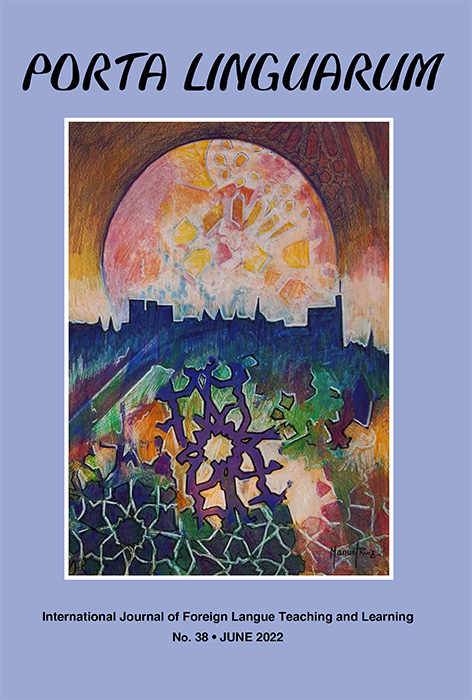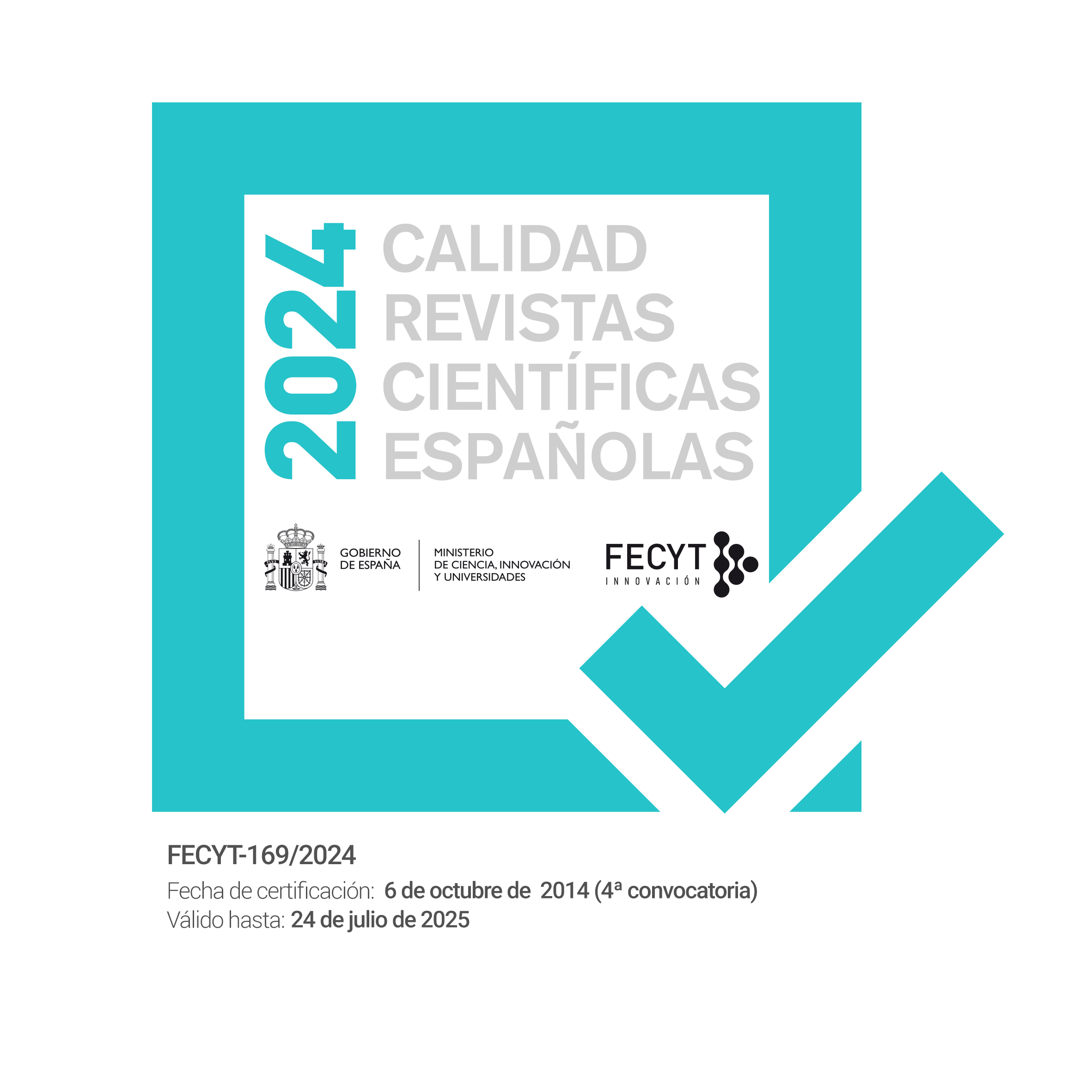Acquisition of L3 Spanish combinations: development in multilingual contexts
DOI:
https://doi.org/10.30827/portalin.vi38.22338Keywords:
collocation, L3, learner corpus, parallel corpus, SpanishAbstract
There has been little research on the acquisition of Spanish collocation, particularly concerning collocation combinations in a multilingual context. Therefore, this corpus-based study attempted to provide new insights for learning Spanish collocation. The research questions are: (1) What are the usage and error tendencies in acquiring Spanish combinations by learners of L3 Spanish? (2) How do the contrasts between L3 Spanish and the learners’ prior languages (L1 Chinese and L2 English) play a role in acquiring L3 Spanish collocation? The results showed a developmental sequence moving from N-Adj, V-N, to Adj-N combinations. Furthermore, the results of the qualitative analysis suggested that most errors were associated with the learners’ L1 (Chinese) and L2 (English). On the other hand, lexical errors might be attributed to the formal similarity between L2 English and L3 Spanish and the meaning transfer between Chinese (L1) and English (L2). Finally, the analysis suggested the similarity among the three languages in form, and the connections among the linguistic features played an essential role in learning L3 Spanish combinations.
Downloads
References
Aisenstadt, E. (1979). Collocability restrictions in dictionaries. ITL, 45-46, 71-74.
Alfahadi, AM., Zohairy, SA., Momani, MM., & Wahby, MH. (2014). Promoting awareness of teaching collocations techniques to beginners (Adjective-Noun collocations). European Scientific Journal, 10(10), 389-396.
Alonso Ramos, M., Wanner, L., Vincze, O., Casamayo del Bosque, G., Vázquez Veiga, N., Mosqueira Suárez, E. & Prieto González, S. (2010). Towards a motivated annotation schema of collocation errors in learner corpora. In N. Calzolari, K. Choukri, B. Maegaard, J. Mariani, J. Odijk, S. Piperidis, M. Rosner and D. Tapias (Eds.), Proceedings of the seventh conference on international language resources and evaluation (pp. 3209–3214). Malta: Valetta.
Bahns, J., & Eldaw, M. (1993). Should we teach EFL students collocations? System, 21(1), 101-114.
Cenoz, J. (2001). The effect of linguistic distance, L2 status and age on cross-linguistic influence in third language acquisition. In J. Cenoz, B. Hufeisen & U. Jessner (Eds.), Cross-linguistic influence in third language acquisition: Psycholinguistic perspectives (pp.8-20). Clevedon: Multilingual Matters.
Cowie, A. P. (1986). Collocational dictionaries—A comparative view. In Murphy (Ed.), Fourth Joint Anglo-Soviet Seminar (pp. 61-69). London: British Council.
Cowie, A. P. (1994). Phraseology. In R. E. Asher (Ed.), Encyclopedia of language and linguistics (pp. 3168-3171). Oxford: Pergamon.
Davies, M. (2002-) Corpus del Español: 100 million words, 1200s-1900s. Available online at http://www.corpusdelespanol.org.
De Angelis G., & Selinker L. (2001). Interlanguage Transfer and Competing Linguistic Systems in the Multilingual Mind. In J. Cenoz, B. Hufeisen & U. Jessner (Eds.), Cross-linguistic influence in third language acquisition: Psycholinguistic perspectives (pp.42-58). Clevedon: Multilingual Matters.
Fan, M. (2009). An exploratory study of collocational use by ESL students—A task based approach. System, 37, 110-123.
Ferraro, G., Nazar, R., Alonso Ramos, M. & Wanner, L. (2014). Towards advanced collocation error correction in Spanish learner corpora. Language Resources and Evaluation, 48, 45-64.
Firth, J. R. (1935) The technique of semantics. Transactions of the Philological Society, 34, 36-72.
Fontenelle, T. (1994). What on earth are collocations? An assessment of the ways in which certain words co-occur and others do not. English Today, 10(04), 42-48.
Granger, S. (1998). Prefabricated patterns in advanced EFL writing: Collocations and formulae. In A. Cowie (Ed.), Phraseology. Theory, analysis and applications (pp. 145-160). Oxford: Clarendon Press.
Halliday, M.A.K. (1966). Lexis as a linguistic level. In J. R Firth, C. E Bazell, J. C. Catford, M. A. K. Halliday & R. H. Robins (Eds.), In Memory of J.R. Firth (pp. 150-161). London: Longman.
Hammarberg, B. (2001). Roles of L1 and L2 in L3 production and acquisition. In J. Cenoz, B. Hufeisen & U. Jessner (Eds.), Cross-linguistic influence in third language acquisition: Psycholinguistic perspectives (pp. 21-41). Clevedon: Multilingual Matters.
Keshavarz, M. H., & Salimi. H. (2007). Collocational competence and cloze test performance: A study of Iranian EFL learners. International Journal of Applied Linguistics, 17(1), 81-92.
Laufer, B., & Waldman, T. (2011). Verb-noun collocations in second language writing: A corpus analysis of learners' English. Language Learning, 61(2), 647-672.
Lorenz, G. R. (1999). Adjective intensification-Learners versus native speakers: A Corpus study of argumentative writing. Amsterdam: Rodopi.
McKeown, K. R., & Radev, D. R. (2000). Collocations. In R. Dale, H. Moisl, and H. Somers (Eds.), A handbook of natural language processing (pp. 507-523). New York: Marcel Dekker.
Mel'čuk, I. (1998). Collocations and lexical functions. In A. P. Cowie (Ed.), Phraseology: Theory, analysis and applications (pp. 24-53). Oxford: Clarendon Press.
Möhle, D. (1989). Multilingual interaction in foreign language production. In H.W. Dechert & M. Raupach (Eds.), Interlingual processes (pp. 179-194). Tübingen: Gunter Narr Verlag.
Nattinger, J., & DeCarrico, J. (1992). Lexical phrases and language teaching. Oxford, UK: Oxford University Press.
Nesselhauf, N. (2003). The use of collocations by advanced learners of English and some implications for teaching. Applied Linguistics, 24(2), 223-242.
Nesselhauf, N. (2005). Collocations in a learner corpus (Vol. 14). Amsterdam, The Netherlands: John Benjamins Publishing.
Odlin, T., & Jarvis, S. (2004). Same source, different outcomes: A study of Swedish influence on the acquisition of English in Finland. International Journal of Multilingualism, 1, 123-140.
Phoocharoensil, S. (2013). Cross-linguistic influence: Its impact on L2 English collocation production. English Language Teaching, 6(1), 1-10.
Ringbom, H. (1987). The role of the first language in foreign language learning. Clevedon: Multilingual Matters.
Ringbom, H. (2001). Lexical transfer in L3 production. In J. Cenoz, B. Hufeisen & U. Jessner (Eds.), Cross-linguistic influence in third language acquisition: Psycholinguistic perspectives (pp. 59-68). Clevedon: Multilingual Matters.
Sinclair, J. (1991). Corpus, concordance, collocation. Oxford, UK: Oxford University.
Siyanova, A., & Schmitt, N. (2008). L2 learner production and processing of collocation: A multi-study perspective. The Canadian Modern Language Review, 64(3), 429–458.
Thewissen, J. (2008). The phraseological errors of French-, German-, and Spanish speaking EFL learners: Evidence from an error-tagged learner corpus. Proceedings from the 8th Teaching and Language Corpora Conference (TaLC 8), 300-306.
Wray, A. (2000). Formulaic sequences in second language teaching: Principle and practice. Applied Linguistics, 21(4), 463-489.



















